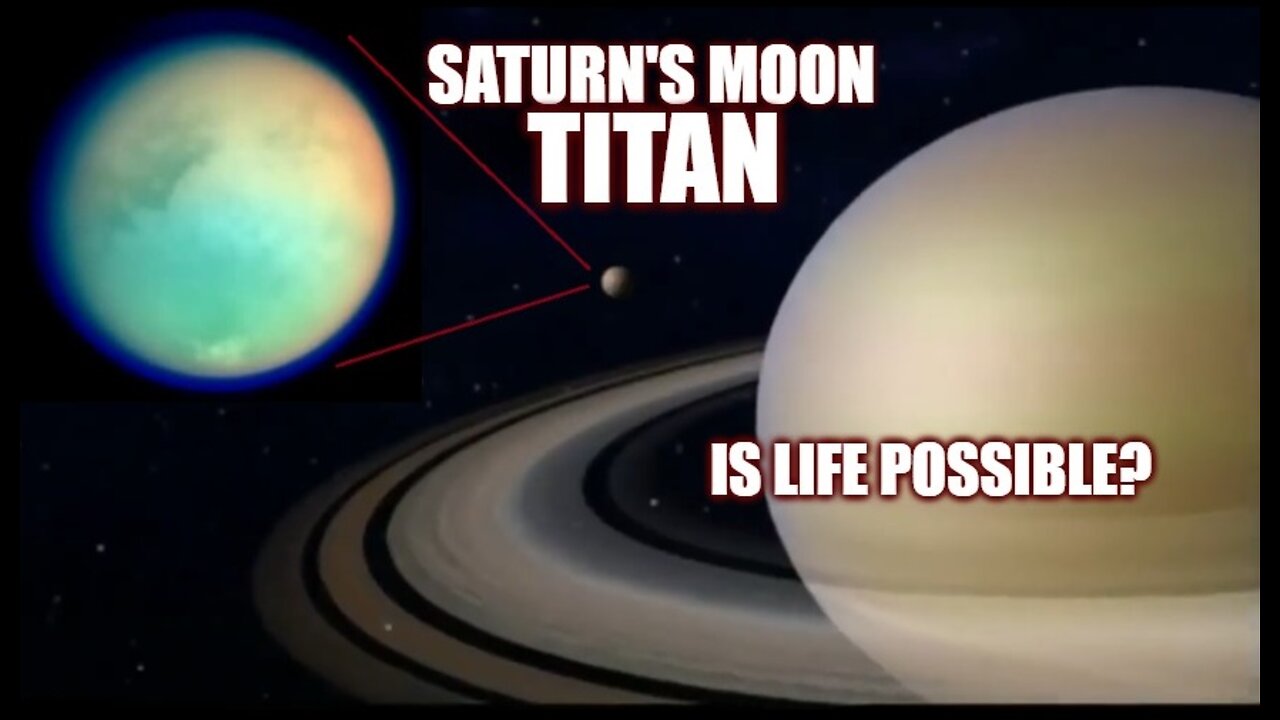Premium Only Content

Documentary: Saturn's Moon Titan. Could There Be Life? Is It a Candidate For Colonization?
Documentary: Saturn's Moon Titan. Could There Be Life? Is It a Candidate For Colonization?
Saturn's largest moon, is an icy world whose surface is completely obscured by a golden hazy atmosphere. Titan is the second largest moon in our solar system. Only Jupiter's moon Ganymede is larger, by just 2 percent. Titan is bigger than Earth's moon, and larger than even the planet Mercury.
This mammoth moon is the only moon in the solar system with a dense atmosphere, and it’s the only world besides Earth that has standing bodies of liquid, including rivers, lakes and seas, on its surface. Like Earth, Titan’s atmosphere is primarily nitrogen, plus a small amount of methane. It is the sole other place in the solar system known to have an earthlike cycle of liquids raining from clouds, flowing across its surface, filling lakes and seas, and evaporating back into the sky (akin to Earth’s water cycle). Titan is also thought to have a subsurface ocean of water.
Titan has a radius of about 1,600 miles (2,575 kilometers), and is nearly 50 percent wider than Earth’s moon. Titan is about 759,000 miles (1.2 million kilometers) from Saturn, which itself is about 886 million miles (1.4 billion kilometers) from the Sun, or about 9.5 astronomical units (AU). One AU is the distance from Earth to the Sun. Light from the Sun takes about 80 minutes to reach Titan; because of the distance, sunlight is about 100 times fainter at Saturn and Titan than at Earth.
Titan takes 15 days and 22 hours to complete a full orbit of Saturn. Titan is also tidally locked in synchronous rotation with Saturn, meaning that, like Earth’s Moon, Titan always shows the same face to the planet as it orbits. Saturn takes about 29 Earth years to orbit the Sun (a Saturnian year), and Saturn’s axis of rotation is tilted like Earth’s, resulting in seasons. But Saturn’s longer year produces seasons that each last more than seven Earth years. Since Titan orbits roughly along Saturn’s equatorial plane, and Titan’s tilt relative to the sun is about the same as Saturn’s, Titan’s seasons are on the same schedule as Saturn’s—seasons that last more than seven Earth years, and a year that lasts 29 Earth years.
-
 12:36
12:36
UndeniableTruth
1 day agoJanuary 2025 Butchers Bill for Living Around Blacks In Your Society
3043 -
 56:24
56:24
Russell Brand
22 hours agoEddie Gallagher: War, Betrayal & Fighting the System
61.1K8 -
 11:21
11:21
TimcastIRL
1 hour agoGOP Rep Says TWO SHOOTERS In JFK Assassination As FBI Uncovers TROVE Of Secret Documents
6.49K16 -
 13:31:32
13:31:32
iViperKing
17 hours agoGood Times + Good Energy Ft. Whez.. #VKGFAM #RRR
70K15 -
 12:24
12:24
Winston Marshall
1 day agoWOAH! Bannon just Revealed THIS About MUSK - The Tech-Right vs MAGA Right Civil War Ramps Up
196K287 -
 7:33:46
7:33:46
Phyxicx
16 hours agoRaid & Rant with the FF14 Guild on Rumble! Halo Night just wrapped up! - Go Follow all these great guys please! - 2/15/2025
134K3 -
 10:42:19
10:42:19
Reolock
18 hours agoWoW Classic Hardcore (LVL 60) | RAID DAY | Rumble FIRST HC Raid
84.5K4 -
 3:10:03
3:10:03
Barry Cunningham
15 hours agoTRUMP WEEKEND BRIEFING! MORE WINNING...MORE LEFTIES LOSING IT!
63.3K37 -
 2:20:09
2:20:09
Tundra Tactical
15 hours ago $3.09 earnedIs Trumps Executive Order A Second Amendment Wishlist???: The Worlds Okayest Gun Live Stream
43.3K2 -
 2:33:51
2:33:51
John Crump Live
20 hours ago $27.37 earnedSaturday Night Main Event!
140K13